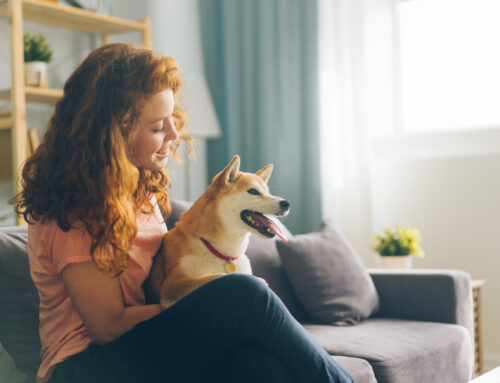We love our dogs and just like humans, they go through changes and developments throughout their life. Dogs who are otherwise on their best behavior can suddenly display signs of bad behavior. Considering that pets have no sense of morality, they do not do something since it’s “incorrect” or “right.” They simply do whatever works. For example, if you see your canine chewing on a chair leg and give him a cookie to distract him from the chair, you have taught him that the next time he desires a cookie, all he has to do is chew on the chair leg.
If their bad behavior wasn’t learned, then this can mean that their bad behavior may be a sign of something else. The longer you let it go on, the harder it will be to fix it. Some problem behaviors specify where they are almost impossible for the typical owner to handle. Dogs need to be properly exercised and stimulated throughout the day.
If you believe your canine might need the sort of aid that you can’t give him, don’t hesitate to seek the aid of a professional fitness instructor.
Pay Attention and Learn to Set Limits
Generally, it’s more subtle but equally dangerous behavior. Does your pet dog bare his teeth at you when you grab his collar to get him off the furnishings? Does the tower above and secure his food bowl or special toys? Is walking him difficult since you can’t trust him to greet other dogs nicely? These are all symptoms of aggressive tendencies that will probably cause a bite event sooner or later.
What to do? Start by setting limits. By rewarding only positive behavior, not responding mentally, and evaluating diet plan are things you must execute around your house immediately. Reinforcing limits with an aggressive dog can trigger the hostility to intensify. There’s essentially no method around it: Because of the capacity for severe damage, it’s crucial to begin dealing with a professional.
Watch Your Approach
Dogs are very receptive to humans’ energy and body language. For example, if your dog is barking and you decide to make noise in return in an attempt to stop them it might not be received the way you think. The message he might receive from you “barking back” is that maybe he should be louder, or maybe he must repeat himself so that you stop. Instead, teach him to bark on command utilizing the words “speak” or “bark,” and to be quiet on command using the words “shush” or “peaceful.” It’s normally much easier to teach “speak” first, while your pet is in fact barking. When he is lastly quiet, state “Good shush,” and reward him once again.
Use Positive Reinforcement
Supplying your pet with safe, appropriate chew toys can make a big difference in their behavior. If he’s chewing things around the home, it will be easier to train him to satisfy his chewing urges with a toy that can keep him entertained. Reward your dog when they chew their toys rather than furniture.
If you have a dog who enjoys to dig, don’t combat him, join him. Digging is a natural canine instinct and can’t be shut down. Instead, select an area in your lawn or on your walk where he won’t do too much damage if he digs. Motivate him to utilize that area by burying something there that he requires to remove. If possible, set up a little sandbox in your yard where your canine can dig.
The same holds for “digging” inside your home. If your dog is scratching at the flooring, they are most likely nervous or bored. Reward your dog when they dig in appropriate areas and make sure they have toys to entertain them from digging when it is not appropriate.
Train Your Dog to Be Calm With Visitors
If you are noticing anxiety or over-excitement when someone enters your home, it is time to train your dog. Simple fixes can make a difference in this behavior and help calm your pet’s nerves.
An easy trick to try with new visitors requires some help from others, but it can make a big difference. Put your dog on his leash, have someone ring the doorbell, focus on your dog, and ask the dog to sit. Your dog can’t leap up on someone if they’re sitting down, lying down, or otherwise restricted.
If they refuse to sit, you wait until they do. When the person can be let in, give them some treats, and have them ask your dog to sit. He sits, he gets a reward. He doesn’t sit, they turn their back on him for a moment. You make certain he doesn’t leap up by holding his leash. Repeat until the pet complies. This is something you’ll require to do over and over again until your pet dog can control himself. Applaud him and offer him a reward when all four paws are on the ground.
Make Sure Your Dog is Healthy
We covered a lot of ways to address common behavioral issues in dogs. If your dog is not responding to training or their behavior suddenly changes, this could be the sign of something else. At Animal Care Center, we make sure to check every possible option to ensure your dog lives a happy, healthy life. We offer advice for training and behavior issues. Your dog deserves the best life you can give them and we are here to help make that possible. Call or contact Animal Care Center today to speak with a veterinarian about your dog and their behavior.






